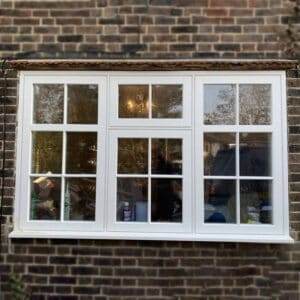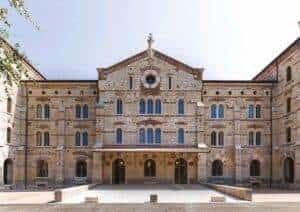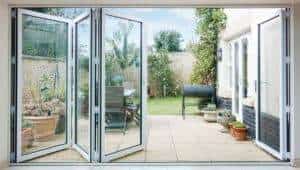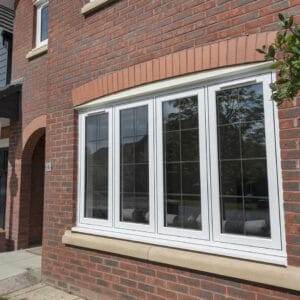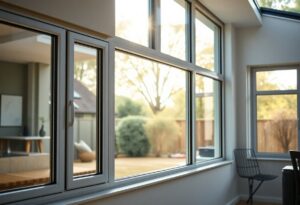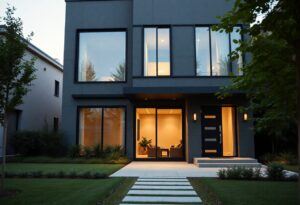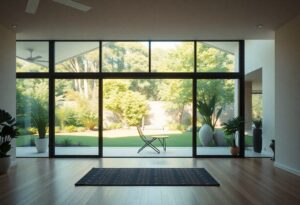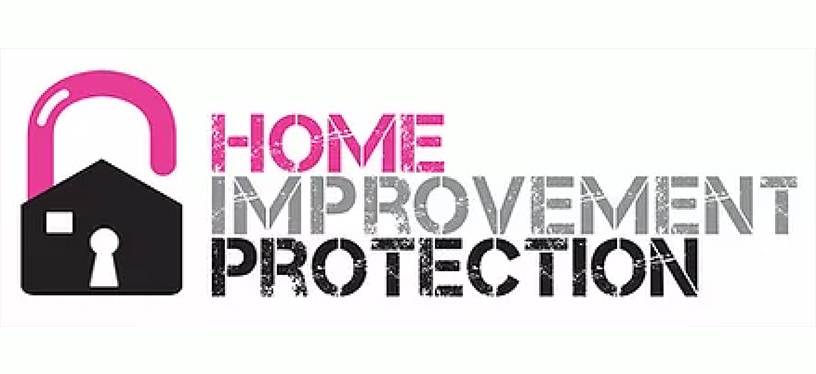There’s a transformative way to enhance your home’s energy efficiency and comfort through the integration of thermal breaks and low-emissivity (Low-E) glass in contemporary steel windows. By choosing these advanced materials, you can significantly reduce heat transfer, leading to lower energy bills and a more comfortable living environment. This post will guide you on how to optimise insulation in your property, ensuring that your investment not only looks stylish but performs efficiently throughout the seasons.
Understanding Thermal Breaks
Before you consider the insulation of your steel windows, it’s important to understand what thermal breaks are and their role in enhancing energy efficiency.
Definition and Importance
Beside serving as a barrier, a thermal break is a material that reduces the flow of heat between the interior and exterior of a building. Its importance lies in its ability to prevent thermal bridging, which can lead to higher energy costs and discomfort in your living space.
Types of Thermal Break Technologies
For effective insulation, you should know about the different thermal break technologies available. These include:
- Polyamide Strips
- Composite Materials
- Insulated Glazing
- Foam Inserts
- Metal Laminates
This variety allows you to choose the best option for your needs.
| Technology | Description |
| Polyamide Strips | Aluminium strips with low thermal conductivity. |
| Composite Materials | Materials combining metals and insulation. |
| Insulated Glazing | Double or triple glazing with a thermal break. |
| Foam Inserts | Simpler, cost-effective insulation options. |
| Metal Laminates | Composite materials for enhanced strength. |
Further exploring these thermal break technologies, you may find that some options offer better energy efficiency and durability than others. This ensures that your steel windows not only look stylish but also perform optimally.
- Energy Efficient
- Durability
- Cost-Effective
- Style
- Performance
This information allows you to make an informed decision when selecting thermal breaks for your windows.
| Key Factor | Significance |
| Energy Efficiency | Reduces heating and cooling costs. |
| Performance | Enhances overall window performance. |
| Durability | Ensures long-lasting functionality. |
| Style | Merges aesthetics with functionality. |
| Cost | Provides value for your investment. |

The Role of Low-E Glass
Any homeowner or builder looking to maximise energy efficiency in steel windows will find that Low-E glass is an important component. This advanced glazing technology helps in maintaining optimal indoor temperatures by reflecting infrared light while allowing visible light to enter. By utilising Low-E glass, you can significantly reduce your heating and cooling costs while enhancing comfort in your living space.
What is Low-E Glass?
Among the various glazing options, Low-E glass stands out due to its special coatings that reflect heat and ultraviolet rays. This type of glass has a microscopic layer of metal oxide that assists in maintaining a comfortable indoor climate. By selecting Low-E glass for your windows, you’re investing in a product designed to improve energy efficiency and protect your furnishings from harmful sunlight.
Benefits of Low-E Coatings
What you may not realise is that Low-E coatings offer a multitude of benefits for your home. These include increased energy efficiency, reduced glare, and improved comfort levels throughout the year.
Plus, by implementing Low-E coatings, you’ll not only contribute to a more sustainable environment, but you’ll also enjoy lower energy bills and a more comfortable living space. These coatings effectively block up to 99% of harmful UV rays that can lead to fading of interior furnishings, while still allowing ample natural light to brighten your home. Furthermore, Low-E glass can also enhance your home’s aesthetic appeal, giving your windows a modern and sophisticated finish that will stand the test of time.

The Synergy of Thermal Breaks and Low-E Glass
Even when used together, thermal breaks and Low-E glass create a formidable partnership in enhancing your building’s insulation capabilities. By optimising thermal performance, these elements work collectively to reduce heat transfer, ensuring that your interiors remain comfortable regardless of the season. This combination not only improves energy efficiency but also prolongs the lifespan of your windows, highlighting the importance of modern materials in contemporary steel window design.
Enhancing Energy Efficiency
Around 30% of a building’s energy loss occurs through its windows. By incorporating thermal breaks and Low-E glass, you significantly minimise this loss. Thermal breaks prevent heat from escaping during colder months, while Low-E glass reflects infrared energy, maintaining your indoor temperature. This synergistic effect reduces your heating and cooling bills, showcasing how modern technology can lead to sustainable energy practices.
Impact on Indoor Comfort
Beside energy savings, the pairing of thermal breaks and Low-E glass greatly enhances your indoor comfort. This combination ensures consistent temperatures within your space, reducing cold drafts and hot spots. It allows you to enjoy your home or office without the fluctuations typical of less efficient window systems.
With stable indoor temperatures facilitated by thermal breaks and Low-E glass, you can enhance your overall well-being. Not only does this pairing minimise uncomfortable drafts, but it also blocks out harmful UV rays, protecting your furnishings and fabrics from fading. The reduction in temperature variations contributes to a healthier indoor environment, promoting better air quality and maximising your comfort. Your decision to invest in these technologies not only elevates your space’s aesthetic appeal but also significantly improves how you experience your surroundings.
Selecting Contemporary Steel Windows
Your choice of contemporary steel windows significantly impacts your building’s aesthetic and efficiency. Consider elements such as design compatibility, energy performance, and durability to ensure they meet your specific requirements while enhancing the overall look of your property.
Key Features to Consider
Windows you choose should exhibit a blend of form and function. Here are crucial features to prioritise:
- Thermal breaks for improved energy efficiency
- Low-E glass for reduced heat transmission
- Minimalist design for a contemporary look
- Customisation options to fit your style
- Durability to withstand various weather conditions
Perceiving these features ensures that you invest in windows that not only perform well but also elevate your building’s design.
Manufacturers and Innovations
Across the industry, various manufacturers are leading the way in developing innovative solutions for contemporary steel windows. They combine modern design principles with advanced materials to create products that enhance energy efficiency and aesthetics.
Innovations in this sector include the use of smart technology in window systems, which allows for automated shading and ventilation. Additionally, advancements in thermal break technology have greatly improved insulation, making steel windows viable in high-performance environments. It’s also crucial to consider sustainability practices in manufacturing, as many brands now prioritise eco-friendly materials and processes. Emphasising these advancements can significantly benefit your renovation or construction project.
Installation Best Practices
Despite the advanced technology behind thermal breaks and Low-E glass, improper installation can compromise their effectiveness. To ensure your contemporary steel windows provide optimal insulation, it is necessary to follow best practices during the installation process. This includes accurately measuring openings, using the correct materials, and following the manufacturer’s guidelines to prevent gaps or misalignments that can lead to energy loss.
Proper Techniques for Optimal Performance
Techniques for installing contemporary steel windows should emphasise precision and attention to detail. Ensure that you use high-quality sealants and insulation materials to minimise air leaks. Additionally, maintain a level structure throughout the installation to avoid future complications with your window’s performance. By adhering to these methods, you will significantly enhance the thermal efficiency of your windows.
Common Pitfalls to Avoid
Avoid common pitfalls that may undermine the insulation properties of your windows. One frequent issue is neglecting proper flashing installation, which is vital for directing water away from the building envelope. Additionally, ensure that you do not overtighten screws or fasteners, as this can cause warping or gaps, ultimately compromising insulation.
Indeed, common pitfalls can lead to significant problems, resulting in higher energy costs or water infiltration. It is important to take your time during the installation process to avoid skipping necessary steps, such as proper flashing or sealing. Overlooking these factors can ultimately undermine the benefits of your thermal breaks and Low-E glass. Take care to conduct thorough checks after installation to ensure there are no visible gaps, as this will ensure the best performance and prolong the lifespan of your windows.
Sustainability and Environmental Impact
Keep in mind that contemporary steel windows equipped with thermal breaks and low-E glass offer significant sustainability benefits. By improving energy efficiency, these windows not only reduce your carbon footprint but also contribute to a healthier environment. Investing in such technology demonstrates a commitment to sustainable building practices, which is increasingly critical for modern living.
Energy Savings Over Time
Against the backdrop of rising energy costs, using thermal breaks and low-E glass can greatly enhance your home’s insulation. Over time, the energy savings from reduced heating and cooling demands translate into lower utility bills, proving that investing in quality window systems pays off in more ways than one.
Recyclability and Material Life Cycle
About steel windows, it is vital to consider their recyclability and extended material life cycle. With proper care and maintenance, these windows can last for decades, and when the time comes for replacement, their components are highly recyclable, reducing overall waste.
Even though you may feel overwhelmed by the sustainability conversation, investing in steel windows is a positive step towards environmental responsibility. Steel is one of the most recyclable materials, ensuring that your old windows won’t end up in landfills. In addition, the long lifespan of these windows means you are reducing the frequency of replacements, ultimately lowering your environmental impact over time. By choosing steel windows with effective thermal breaks and low-E glass, you actively contribute to a sustainable future while enhancing your home’s energy efficiency.
Conclusion
Summing up, by integrating thermal breaks and Low-E glass into your contemporary steel windows, you are effectively enhancing your home’s insulation and energy efficiency. These advancements not only improve comfort levels but also significantly reduce heating and cooling costs. Choosing these modern materials ensures that your investment in windows aligns with both aesthetics and practicality, providing lasting benefits for your property.
FAQ
Q: What are thermal breaks, and how do they improve insulation in contemporary steel windows?
A: Thermal breaks are materials that act as insulators between the inner and outer frames of a window, significantly reducing heat transfer. By disrupting the flow of thermal energy, they enhance the energy efficiency of contemporary steel windows, preventing heat loss in winter and minimising heat gain in summer.
Q: What is Low-E glass, and what benefits does it provide in terms of insulation?
A: Low-E (Low Emissivity) glass features a thin coating that reflects heat while allowing natural light to pass through. This glass type reduces the amount of UV and infrared light entering a room without compromising natural brightness. Consequently, Low-E glass improves thermal insulation by keeping indoor spaces warmer during colder months and cooler in hotter months.
Q: How does combining thermal breaks with Low-E glass enhance energy efficiency?
A: When thermal breaks are used alongside Low-E glass, the insulation properties of both components work synergistically. This combination minimises thermal bridging and heat transfer, resulting in superior energy efficiency. Such integrated solutions can significantly reduce heating and cooling costs, contributing to a more sustainable building environment.
Q: Are contemporary steel windows with thermal breaks and Low-E glass suitable for all climates?
A: Yes, contemporary steel windows equipped with thermal breaks and Low-E glass are suitable for various climates. These features provide excellent insulation regardless of whether the environment is predominantly hot, cold, or variable, making them a versatile choice for energy-efficient building solutions everywhere.
Q: What maintenance is required for steel windows with thermal breaks and Low-E glass?
A: Maintenance for these windows is relatively straightforward. Regular cleaning of the glass and frame is important to maintain their aesthetic and functional qualities. Periodically inspect for signs of damage, especially around the seals, to ensure optimal performance. Proper care will prolong the lifespan and efficiency of the windows.

